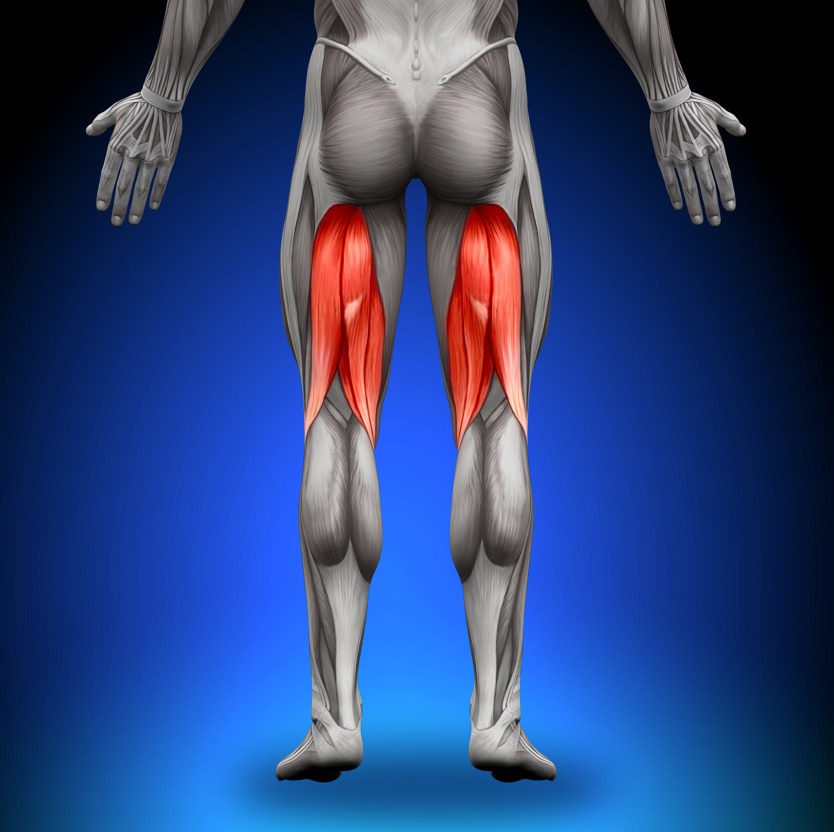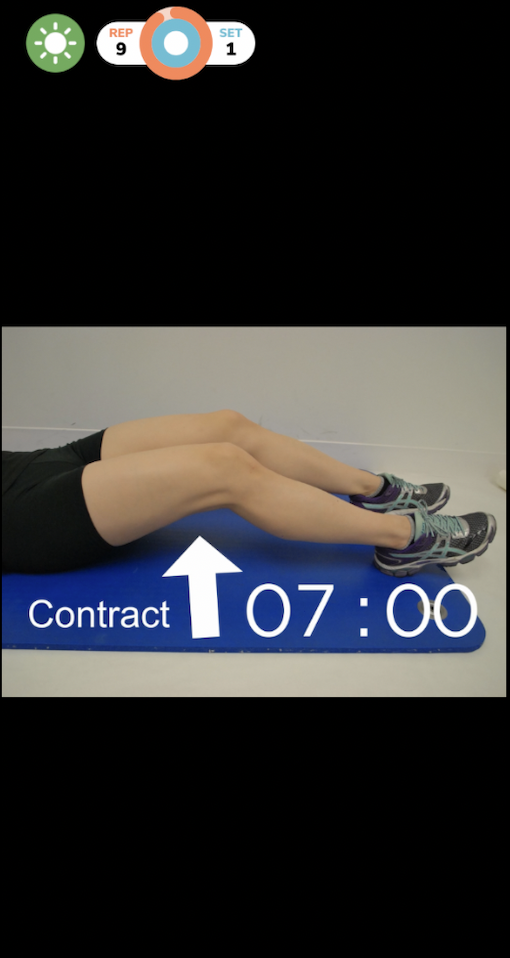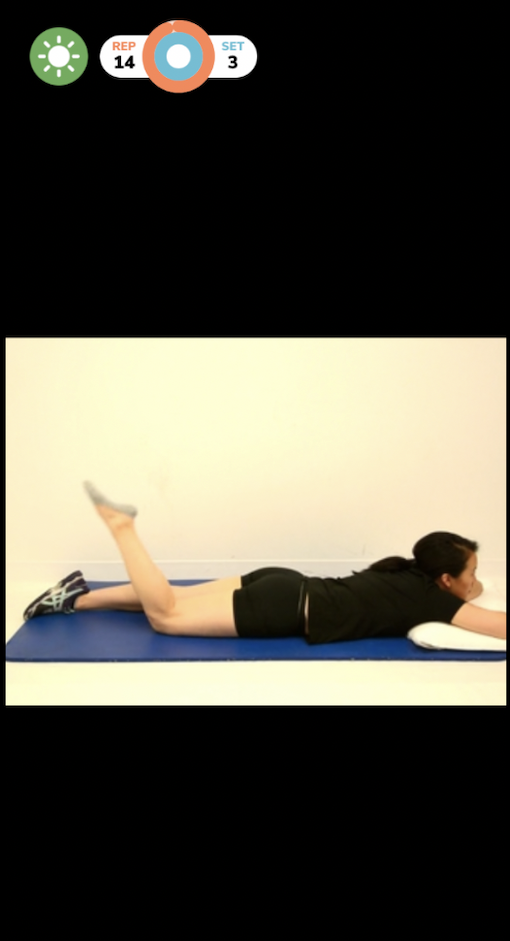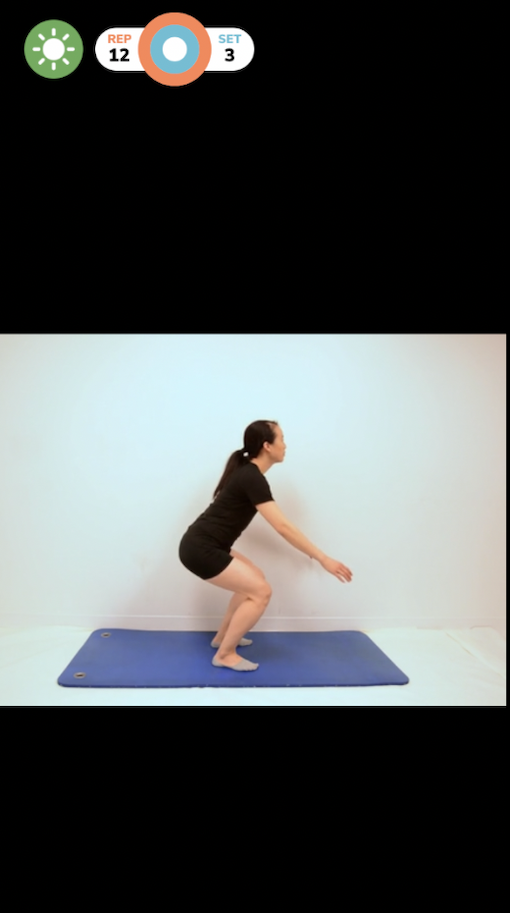Image by Maridav via Canva Pro
During your ACL surgery the damaged ligament will be replaced with a graft. There are four types of grafts that can be used to repair your ACL. Check out "What Are the Most Common Areas for an ACL Graft? | Curovate" to learn more about the different types of grafts. One common way to repair your ACL is to use your hamstring tendon. Recovery from ACL surgery not only focuses on knee range of motion but also strengthening exercises. When a part of your hamstring is used for ACL surgery, it will become weaker.[1] You're probably wondering then, when can I start to strengthen my hamstrings? Is there a period of time I need to wait before I begin? This blog answers your questions!

Image by decade3d via Canva. The hamstrings are located on the back of the thigh. They are important for flexion of the knee and extension of the hip, as well as stablizing the knee.
Brief overview of the hamstring muscles as they relate to an ACL surgery
The 3 hamstrings muscles (the muscles on the back of your thigh) play an important role in the functioning of the knee. These muscles are involved in bending your knee (flexion) and moving your hip backwards (extension). Additionally, they provide joint stabilization and prevent excessive ACL shear forces during fast paced movement.[2] When you tear your ACL, a common surgical technique used is to take a piece of your hamstring tendon, the semitendinosus tendon to be specific, and use it to replace your torn ACL.[5]
An ACL injury and the resultant graft used, significantly impacts hamstring function. Restoring this function is a key aspect of the recovery process after an ACL reconstruction.[2] Previous research has shown that people who had a greater difference in quadricep to hamstring strength were more likely to re-tear their ACL.[4] What this means is that it is important to focus on hamstring strength after ACL reconstruction especially if the graft was taken from your hamstring.
Hamstring strengthening exercises and why you have to wait
Before we talk about strengthening exercises, there are definitions about the types of exercises that are important to understand.
Isometric: Muscle contraction without motion.

Image via Curovate app. Image #1 depicts an isometric hamstring exercise in which the hamstrings contract without moving the leg.
Concentric: The muscle shortens to produce movement.

Image via Curovate app. Image #2: The heel slide is a modified concentric exercise where using the towel to assist, the hamstrings contract to move the heel closer to the buttocks.
Open chain exercises: Exercises where the hand or foot that is moving isn't resting on a surface.

Image via Curovate app. Image #3: The hamstring curl is an open chain exercise in which the hamstrings contract to move the heel towards the buttocks.
Closed chain exercises: Exercises where your hand or foot is pressing against a surface

Image via Curovate app. Image #4: depicts a squat which is a closed chain exercise. In the squat the feet are pushing into the ground and remain on the ground throughot the movement.
During the first 4 weeks after surgery, for hamstring strengthening you can do isometric closed chain exercises (image #1) as well as light concentric closed chain exercises (image #2).[3] For example, you can contract the hamstrings without moving the leg (isometric) and heel slide up to 90 degrees of flexion (concentric closed chain) using an assisted device like a towel. Between 4-8 weeks is when you can begin to initiate open chain hamstring exercises with no weight or light resistance (image #3). These can be exercises like hamstring curls while on your stomach. After 8 weeks, you can begin to incorporate a variety of open and closed chained exercises for the hamstrings.[3] Examples can include adding ankle weights to hamstring curls while lying on your stomach and squats (image #4).
Although you can begin strengthening exercises shortly after surgery, you will need to wait some time to complete certain strengthening exercises because your graft needs time to heal properly. The graft will eventually heal towards optimal strength but in the first few months, it is significantly weak and therefore it takes much less force to potentially injure it.[6] Certain types of strengthening exercises can damage the graft while others can help regain strength.[6] For more information on the graft healing stages please refer to the blog "Is my ACL graft weaker than my original ACL? Or is my ACL graft stronger than my original ACL?" Generally it is recommended that open chain concentric exercises be postponed for 6-8 weeks after surgery.[1]
Conclusion
After ACL reconstruction surgery using a hamstring tendon graft, you may be wondering when you can start strengthening your hamstrings again, and if there is a period of time that you need to wait. There are strengthening exercises (such as isometric closed chain exercises) that you can do shortly after your surgery to help regain hamstring strength. You need to wait to complete certain strengthening exercises after your reconstruction surgery as these can potentially damage your graft. Concentric open chained exercises are an example of what you should avoid initially but are perfectly safe later in your recovery.
Our mobile app, Curovate, is a great resource that provides you with an in-depth, step by step plan to aid in your ACL recovery. You can specifically choose the type of graft used and have online physical therapy through a personalized plan with video guided strengthening exercises to complete throughout each stage of the healing process, all in the comfort of your own home. You can download the Curovate physiotherapy app from the App Store or the Play store by using the links below.
If you need further customized assistance during your surgery or injury recovery check out our Virtual Physical Therapy page to book your 1-on-1 video session with a physical therapist.
 |
 |
|---|







